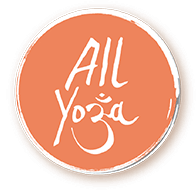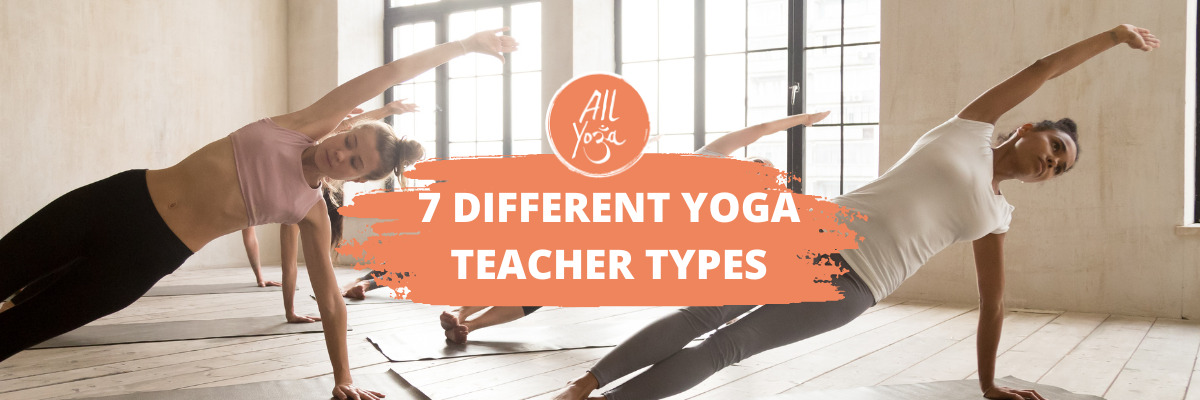Types of Yoga Certifications and Teachers – Which Fits You Best? (2024 Guide)
Types of Yoga Certifications
There are many recognized certifications for teaching yoga, each with a different emphasis and methodology, like Hatha for beginners, Vinyasa for flowing sequences, and Iyengar for precise alignment. You may also consider the traditional Ashtanga, Jivamukti, and Yin yoga. Whichever you choose, the standard for comprehensive training is the 200-hour Yoga Alliance certification.
| Type of Yoga | Key Features | Certification Requirements | Certification Benefits |
|---|---|---|---|
| Hatha Yoga | Slower pace, focus on alignment, basic poses | 200-hour YA certification |
|
| Vinyasa Yoga | Flowing sequences, breath-synchronized movement | 200-hour YA certification |
|
| Iyengar Yoga | Precise alignment, use of props, therapeutic | 200-hour Iyengar certification |
|
| Ashtanga Yoga | Set sequences, power & flexibility, vinyasa style | 200-hour Ashtanga certification |
|
| Jivamukti Yoga | Spiritual, chanting, rigorous flowing sequences | 300-hour Jivamukti certification |
|
| Yin Yoga | Long-held, passive floor poses, meditation | 100-hour Yin certification |
|
Regardless of the outcome, experiencing yoga teacher training and flourishing as a teacher is one of the best feelings you will experience. Growing into your own teaching style and having the self-awareness to support yourself through teaching are two of the most important things to consider, regardless of the outcome.
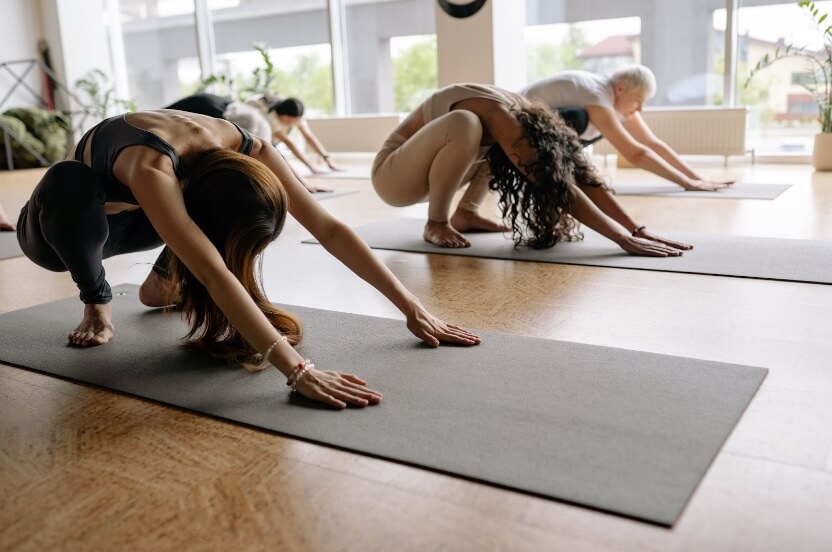
1. Hatha Yoga
Being one of the most in-demand yoga certifications, Hatha yoga is a general term for any physical yoga practice rather than a specific style. While not as fast-paced as more athletic styles, Hatha classes still build strength and stability.
I trained in Hatha yoga because I wanted to learn how to hold poses longer to promote mindfulness. Hatha incorporates basic asanas, breathing exercises, and meditation for a gentle yet well-rounded physical practice.
- It focuses on basic poses and alignment principles, like a slower-paced, meditation-based style. Certification builds skills in fundamental teaching methods and adapting yoga for beginners.
- Certification requirements: 200-hour training is recommended at most registered yoga schools, especially in India, for authentic hatha training.
- Certification benefits: Certification builds skills in fundamental teaching methods and adapting yoga for beginners.
- Perfect for: Beginners easing into yoga or seasoned practitioners pursuing certification.
2. Vinyasa Yoga
Vinyasa yoga focuses on smooth, flowing sequences of poses synchronized with breath. Often called flow yoga, vinyasa seamlessly transitions between asanas with dance-like fluidity.
The steady development of intensity allows for creative expression. While following a structured sequence, teachers can adapt it to students’ needs. I find vinyasa popular among my students because it builds strength while providing some freedom.
- Certification develops the ability to build balanced, safe sequences with seamless transitions. Once you master it, you can create dynamic, flowing sequences synchronized with breath, allowing creative freedom in sequencing.
- Certification requirements: No prerequisites, only a 200-hour training that combines poses with yoga philosophy and anatomy.
- Perfect for: Developing mind-body connection. Creative types will enjoy the freedom of sequencing.
3. Iyengar Yoga
Iyengar yoga emphasizes precision and alignment in each pose. Founded by B.K.S. Iyengar, this meticulous style uses yoga props like blocks and straps to achieve anatomical perfection.
While this teacher training course has a slower pace, Iyengar builds strength and flexibility by holding poses longer. The emphasis on anatomical purposes and props makes Iyengar therapeutic in addition to physically demanding.
- Unlike yin yoga, Iyengar provides anatomical alignment using props like blocks and straps. Certification establishes expertise in poses, modifications, and using props for injuries or conditions.
- Certification requirements: Study at B.K.S. Iyengar’s institute in Pune, India, or with certified disciples to earn a CIYT certificate.
- Perfect for: Detail-oriented perfectionists seeking a gentle, therapeutic style.
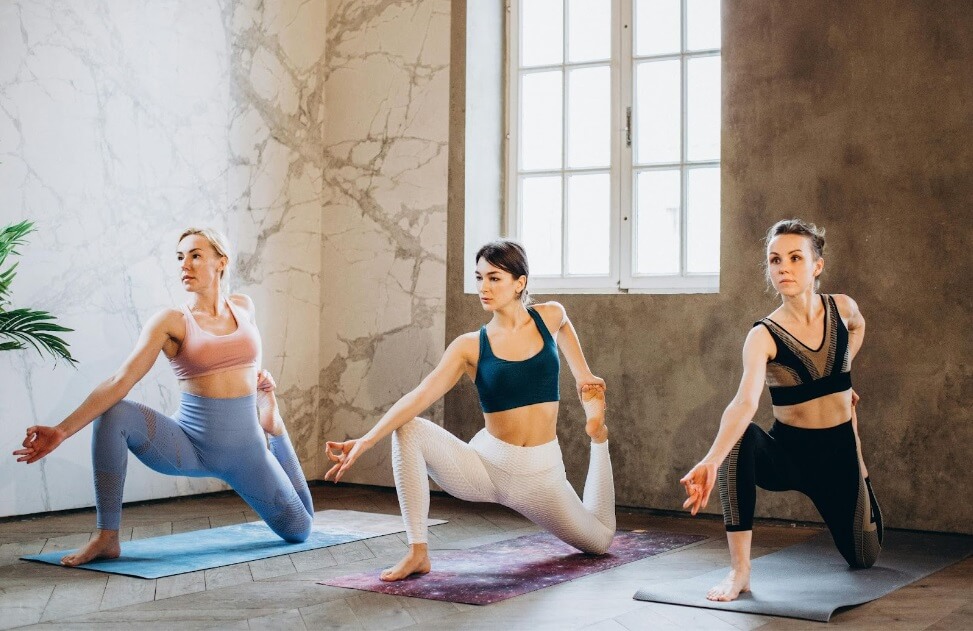
4. Traditional Ashtanga Yoga
K. Pattabhi Jois established Ashtanga in the 1970s and remains one of the most physically intense forms of yoga. True to its name, which means “eight limbs” in Sanskrit, Ashtanga rigorously follows the eight limbs of yoga laid out by Patanjali. This includes poses, breathwork, concentration, meditation, and ethical disciplines.
The yoga practice is very structured, with every class following the same sequence of poses. The primary series focuses on detoxification and opening energy channels. Meanwhile, the advanced levels require immense strength, flexibility, and determination to complete long, rapidly flowing vinyasa sequences.
- Physically and mentally demanding, teaching Ashtanga requires rigorous, set sequences of power poses linked by vinyasas. However, my certification proves deep knowledge of key series, adjustments, and assists for advanced students.
- Certification requirements: 200-hour training with the Jois family in Mysore, India, for authentic certification.
- Perfect for: Disciplined practitioners who enjoy set sequences and vigorous yoga.
5. Jivamukti Yoga
Jivamukti yoga is an intense hybrid style created by David Life and Sharon Gannon, combining hatha, vinyasa, and ashtanga sequences with spiritual aspects like chanting, yoga philosophy, and meditation.
The five core principles are scripture, devotion, compassion, music, and meditation. Jivamukti aims to be a vigorous yet holistic practice for self-growth on physical, ethical, and spiritual levels.
- Compared to yin yoga, this spiritual style incorporates the five principles of shastra, bhakti, ahimsa, nada, and dhyana. Certification integrates physical rigor with deeper yoga wisdom and lifestyle.
- Certification requirements: At least 300-hour training from Jivamukti Yoga training centers in the USA, Costa Rica, or India.
- Perfect for: Spiritual people, vegans, and activists interested in chanting, music, and meditation.
6. Yin Yoga
Yin yoga, developed by Paulie Zink, blends long-held Chinese Taoist yoga poses to target deeper connective tissues versus a flowing style. Poses are held for two to 20 minutes to find your body’s edge without overexertion.
With just 30 main poses focused on ligaments, fascia, and other tissues, yin is meditative. The passive approach and a few poses allow practitioners to master key movements while developing physical and mental stillness.
- This meditative style is perfect for teachers looking for long-held, passive floor poses targeting connective tissues. Getting certified in teaching yin yoga lets you specialize in safe pose holds, anatomy, and guiding stillness.
- Certification requirements: 200-500 hours of training from yoga schools, like the Yin Yoga Institute by Paulie Zink.
- Perfect for: Patient and Zen-like personalities seeking stillness and relaxation.
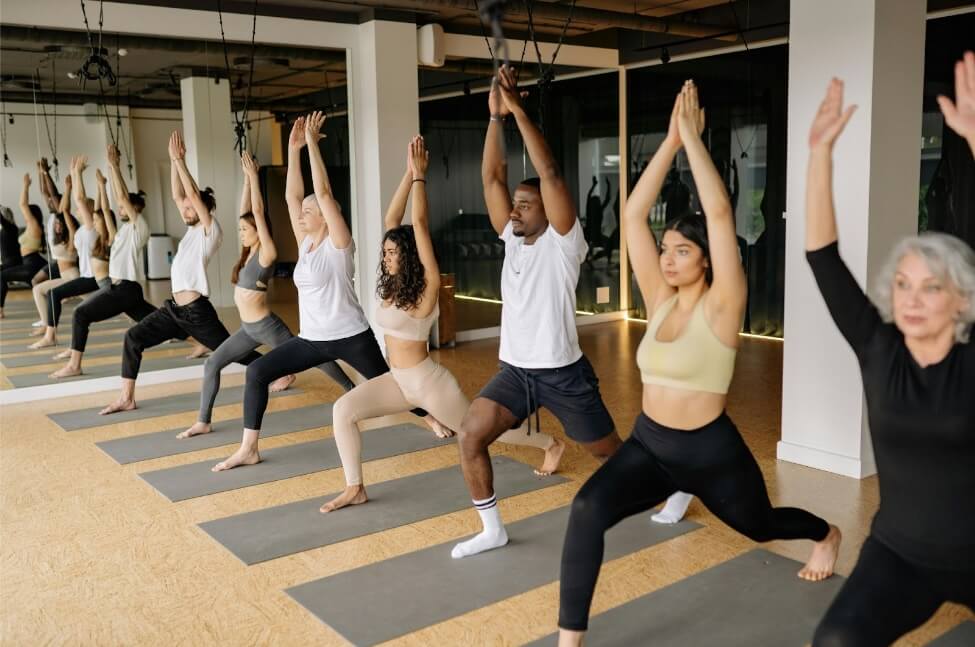
Insights From a Certified Yoga Instructor
We connected with Wenlin Tan, a women’s Qigong & Yoga Specialist who has over 15 years of experience in the field, because she’s also holds multiple certifications in the areas we shared above. When asked on her recommendations for what to get certified in and some caveats that instructors should know, here’s what she said:
Aside from these styles, Ashtanga Yoga is also very popular and serves as a good foundation for or alternative to Vinyasa Yoga, so if you are deliberating what style of Yoga to undertake a certification in, this may be something to consider.
My choice not to get certified in Ashtanga Yoga is a personal one. This lineage is quite rigorous and also technical, and tends to attract Type As, which was my experience in an Ashtanga class. I enjoy creative expression, freedom, and the opportunity to practice and sequence my classes differently, which isn’t really allowed within Ashtanga yoga, which is why I continued with Vinyasa flow.
If however, you enjoy structure, discipline, repetition of a set sequence, and having a clear system of progressing through your practice (Ashtanga has a rigorous system of 6 levels, Primary, Intermediate, Advanced A, Advanced B, Advanced C and Advanced D), then this may be a suitable style for you to get certified in.
That being said, there are some caveats to getting certified in Ashtanga and Iyengar Yoga. Both of these schools / Lineages are associated with gurus who have been involved in sexual misconduct and abuse of women – Manouso Manos, a senior Iyengar Yoga teacher, and Pattabhi Jois, founder of Ashtanga Yoga. Despite the merits of their respective practices, as a teacher and coach who works primarily with women, I prefer not to associate myself with these practices.
As a teacher based outside of the USA, I’ve not had the opportunity to encounter Jivamukti Yoga much and thus never considered receiving a certification in it since I don’t know it well. Iyengar Yoga is also not as widely practiced, and as a student of Yoga, I had limited experience and exposure to it, so I did not get certified in it
What Type of a Yoga Teacher Are You?
Despite the cultural and social backgrounds of yoga teachers around the world, they share the common denominator of spirituality, healing, personal, and physical development through asanas (yoga poses). While there are similarities between them, many yoga teachers also share the same biased nature in their teaching styles and identities.

What kind of teacher do you want to become when you graduate from your 200-hour yoga teacher training course? There’s a recurrent thread of different styles, approaches, and trends that are as different and quirky as the next.
- Bootcamp teacher: Perhaps you are structured, militant, enjoy routine, and put your students through their paces. Many authoritative yoga teachers throw the more challenging poses into the mix and really enjoy pushing their students to their limits.
- Spiritual woo-woo teacher: The woo-woo teacher normally comes in the form of a person dressed in white and embodies a higher spiritualistic sense of self. This kind of teacher has a strong emphasis on using mantras within their classes, and will glare into your soul by staring deep into their student’s eyes.
- Stick-to-my-mat teacher: Walk around the space and make use of physical adjustments (that’s what they are there for!). Engage with your student’s energy levels, and start to build a rapport with who is in the room to ensure they return to your next class.
- Traditional Ashtanga teacher: COUNT, POSE, BREATH, DRISHTI – does that pretty much sum it up? Strictly speaking, that is all you need when teaching traditional ashtanga. However you might want to inject a little more personality into your teaching style. Ashtanga isn’t the easiest style of yoga to grasp as a student, so not sticking to the script will help you explain the tougher asanas and make the practice more personal and achievable for a wide range of students.
- Instagram teacher: Save the pictures and videos for after the class; social media and Instagram are some of the best free-selling tools to utilize. Try using it as a business tool for your teaching rather than demonstrating your most recent yoga.
- DJ teacher: There is nothing quite like a perfectly curated playlist and designing a sequence that flows alongside it. Try to use the music to create and add to the atmosphere of the class and the environment you are trying to achieve.
- All Yoga teacher: All Yoga teachers are successful as they have a strong sense of self-practice and can guide their students in an authentic nature while safely adjusting throughout the class.
All Yoga teachers are confident, playful, and creative in their teaching, as they have the freedom to sequence in a style that is authentic to them while drawing on a strong foundation of the modified primary series.
- Do these resonate with you? Do you want to teach these types of yoga?
- So what teacher do you think you will be?
- Do any of the above sound like they would resonate?
- Maybe you have yet to explore what type of teacher you are, and that’s totally fine!
Join us!
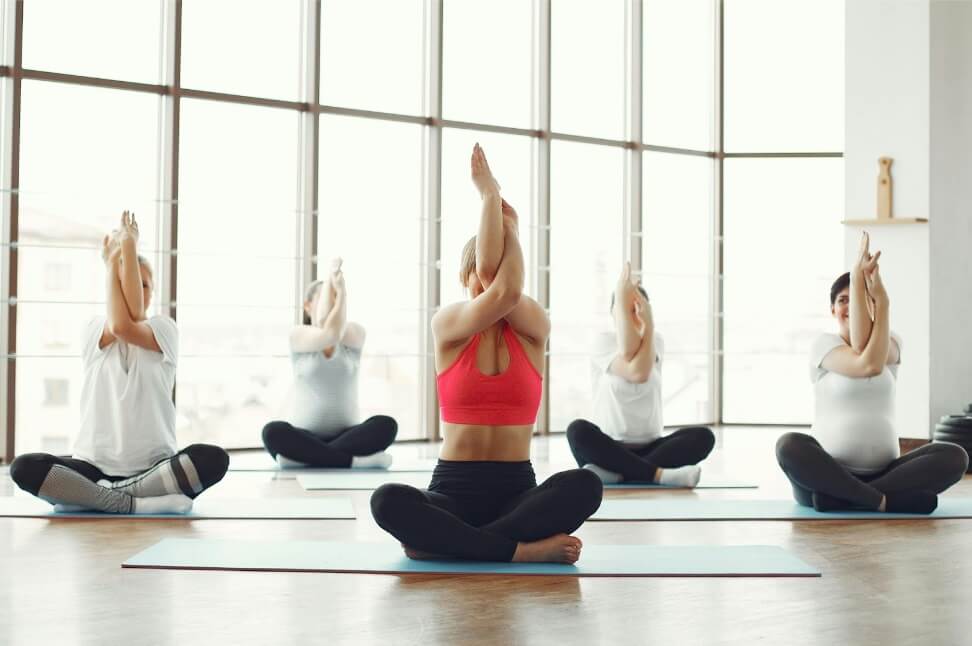
Frequently Asked Questions
What Is the Best Certificate for Yoga Teacher Training?
The 200-hour Yoga Alliance certification is widely considered the benchmark for comprehensive, high-quality teacher training globally. It provides a strong foundation across all aspects of teaching yoga.
What Is the Highest Level of Yoga Certification?
The highest credential is the Experienced Registered Yoga Teacher (E-RYT) certification, requiring over 10,000 hours of teaching experience beyond the standard 200-hour training. It denotes deep wisdom and mastery of yoga.
What Is the Easiest Yoga Certification?
Hatha yoga training tends to be the most accessible certification, with a slower pace and a focus on foundational poses and alignment principles. The requirements are achievable for beginners.
Conclusion
Being informed about the various types of yoga teaching certifications will ensure you select the right program to suit your goals and teaching style. Consider factors like lineage, physical demands, and teaching methodology when choosing the best yoga certification.
Read More Blogs
Want to Become a Yoga Teacher and/or
Deepen your Yoga Practice?
2 FREE EBOOKS FOR YOU:
- 20 things to know before choosing a yoga teacher training
- 7 tips to deepen your yoga practice right now
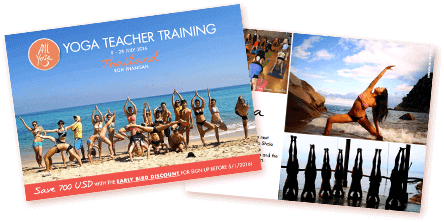
Copyright © 2024, All Yoga International ltd. All Rights Reserved
Privacy Policy